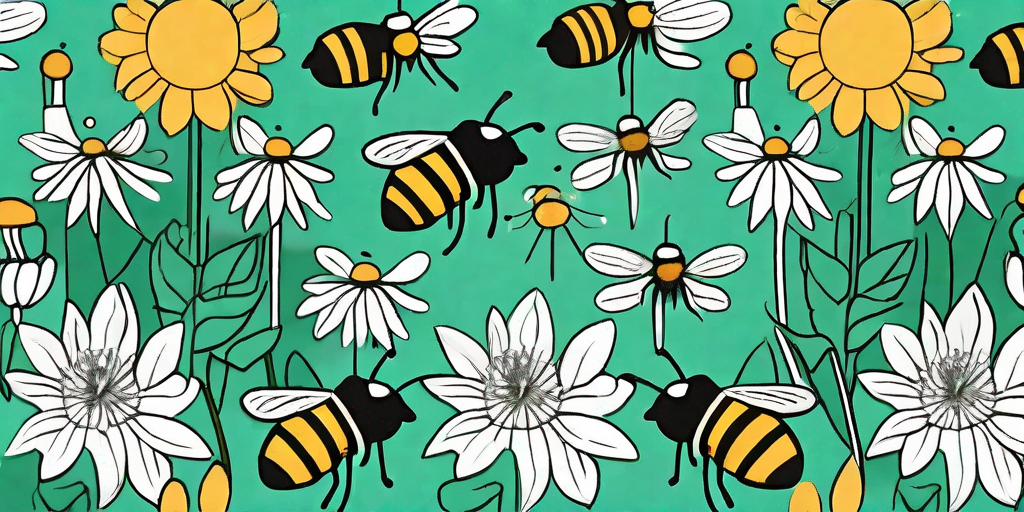
If you're a fan of all things buzzing and blooming, then you're in for a treat. We're about to dive into the world of Bee Balm, a plant that's as intriguing as its name. With its vibrant colors and irresistible scent, Bee Balm is the secret ingredient to a garden that's not just beautiful, but also buzz-worthy. So, buckle up, green thumbs, because we're about to embark on a journey of botanical discovery.
What is Bee Balm?
Before we delve into the nitty-gritty, let's get acquainted with our star plant. Bee Balm, scientifically known as Monarda, is a perennial plant native to North America. It's a member of the mint family, which might explain why bees and hummingbirds can't resist its sweet allure. But don't be fooled by its delicate appearance; this plant is as hardy as they come, making it a perfect addition to any garden.
Now, you might be wondering, "Why is it called Bee Balm?" Well, the answer is simple. Bees love it! This plant is a veritable bee magnet, attracting these buzzing pollinators like no other. But it's not just bees that are drawn to it. Butterflies, hummingbirds, and even gardeners (like you and me) can't resist its charm.
The Benefits of Bee Balm
Aside from being a visual treat, Bee Balm offers a plethora of benefits. For starters, it's a fantastic pollinator. With the decline of bee populations worldwide, planting Bee Balm in your garden is a small but significant step towards conservation. Plus, it's a great way to ensure your garden is always buzzing with life.
But the benefits don't stop there. Bee Balm is also known for its medicinal properties. Native Americans have used it for centuries to treat a variety of ailments, from colds to skin infections. So, not only does it make your garden look good, but it can also come in handy when you're feeling under the weather.
Beneficial for Bees
As we've mentioned, Bee Balm is a bee's best friend. It provides them with nectar, which is essential for their survival. But it's not just about survival; it's also about thriving. A garden filled with Bee Balm is a garden filled with happy, healthy bees.
And let's not forget about the role bees play in our ecosystem. They're responsible for pollinating a significant portion of our food crops. Without them, our food system would be in serious trouble. So, by planting Bee Balm, you're not just helping bees; you're helping us all.
Medicinal Properties
Bee Balm's medicinal properties are nothing short of impressive. It's been used to treat everything from digestive problems to skin conditions. Its leaves can be used to make a soothing tea, while its flowers can be made into a healing salve. It's like having a natural pharmacy right in your backyard.
But remember, while Bee Balm is beneficial, it's not a substitute for professional medical advice. Always consult with a healthcare provider before using any herbal remedies.
How to Grow Bee Balm
Now that we've covered the what and the why, let's move on to the how. Growing Bee Balm is a relatively straightforward process, even for those who don't possess a green thumb. Here's a step-by-step guide to help you get started.
- Choose the Right Spot: Bee Balm prefers full sun but can tolerate partial shade. It also likes well-drained soil.
- Plant the Seeds: Plant the seeds about a quarter of an inch deep and 18 inches apart. Water them thoroughly after planting.
- Water Regularly: Bee Balm likes moist soil, so make sure to water it regularly, especially during dry spells.
- Watch for Pests: While Bee Balm is generally pest-resistant, it can occasionally attract aphids or powdery mildew. Keep an eye out for these and treat them promptly if they appear.
- Enjoy Your Blooms: With proper care, your Bee Balm should start blooming in the summer. Enjoy the buzz of bees and the flutter of butterflies as they flock to your beautiful blooms.
FAQs
Is Bee Balm invasive?
While Bee Balm can spread quickly, it's not typically considered invasive. However, it's always a good idea to keep an eye on its growth and control it if necessary.
Can I grow Bee Balm in a pot?
Absolutely! Bee Balm can be grown in pots, making it a great option for those with limited garden space.
Does Bee Balm come in different colors?
Yes, it does. Bee Balm comes in a variety of colors, including red, pink, purple, and white. So, you can choose the one that best matches your garden's color scheme.
Conclusion
So, there you have it, everything you need to know about Bee Balm. Whether you're a seasoned gardener or a newbie, this plant is sure to add a touch of magic to your garden. So, why wait? Start planting today and watch your garden transform into a buzzing paradise.
And remember, a garden filled with Bee Balm is more than just a garden. It's a haven for bees, a medicine cabinet, and a source of endless joy. So, go ahead, make your garden buzz-worthy with Bee Balm.















